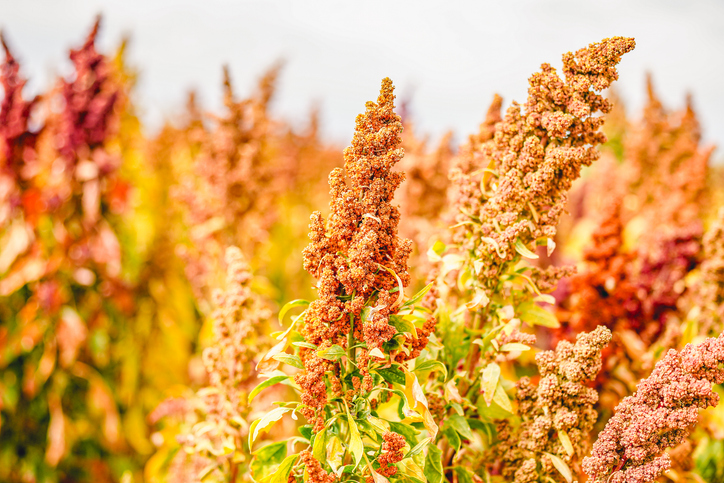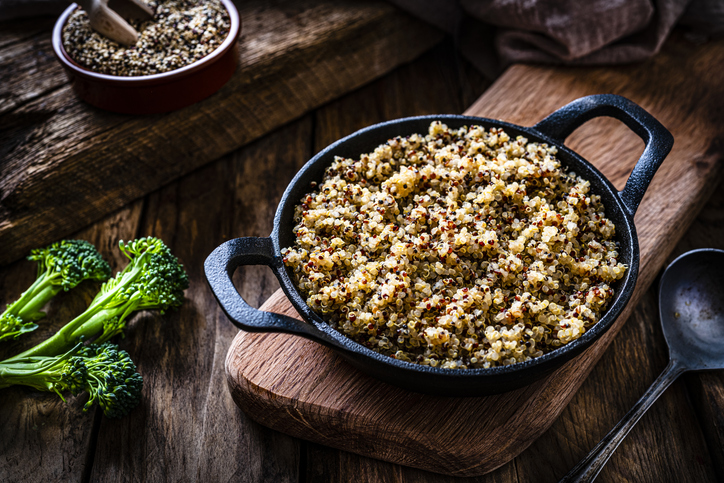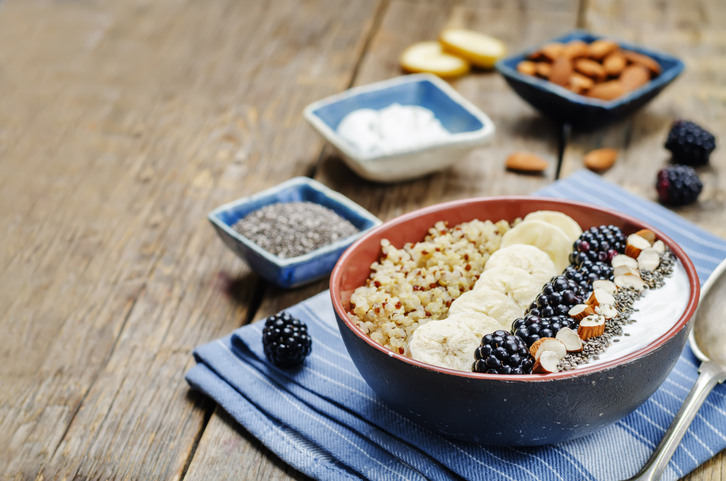This series puts the spotlight on functional food: ingredients that are packed with nutrients and easy to incorporate into busy schedules. Today we explore a grain that really isn’t: QUINOA!

All about quinoa
Ke-what? Pronounced keen-waa, quinoa is an ancient seed that is in the same family as sugar beets and spinach. Because quinoa is often prepared like the cereal grains (wheat, oats, rice) it is referred to as a pseudo-grain.
Quinoa’s use as a food source began about 5,000 years ago high in the Andes mountains with the Incas of Bolivia, Peru and Chile. It is referred to as the “mother grain” due to it’s high protein content, resistance to disease and naturally high lysine content, which we’ll talk more about in a minute.
One of quinoa’s most notable benefits is that it is a gluten free food. Gluten is that protein which gives bread is structure and texture. Gluten is also that pesky ingredient that can lead to gastrointestinal issues and “leaky gut”, even if you don’t have a known sensitivity or allergy. Leaky gut is associated with inflammation, insulin resistance, auto-immune disease and other ailments.
Nutrition breakdown and health benefits

Protein: Quinoa contains about 8 grams of protein per serving, about twice that of rice. Quinoa is one of few plant based complete proteins available. This means that it contains all 9 essential amino acids – those that your body can’t make on it’s own, including lysine which may improve calcium absorption and collagen production. Adequate protein intake is essential for muscle and bone repair, as well as hormone production and cellular function. Bonus: high protein foods help you feel full longer.
Fiber: Quinoa really shines in its fiber delivery. A key ingredient for a healthy gut, fiber is responsible for keeping you full and supporting metabolic health through blood sugar regulation, improved cholesterol and weight regulation. Quinoa provides nearly 20% of our daily value of fiber at 5 grams per serving.
Antioxidants: These are those nutrients that help protect our body from free radical damage. They are responsible for DNA repair (excessive DNA damage = disease, cancer), decreasing inflammation and supporting healthy skin and eyes to start. Quinoa is especially rich in quercetin and kaempferol, both with strong cardiovascular, inflammation and anti-cancer benefits.
Vitamins and Minerals: A single serving of quinoa provides at least 20% recommended dietary allowance (RDA) of:
Manganese (52% RDA) – Important for bones, connective tissue, blood clotting factors and sex hormones
Copper (44% RDA ) – Most people do not get enough copper in their diets. Copper helps make red blood cells, keeps nerve cells healthy and supports the immune system.
Magnesium (28% RDA) – Necessary for energy production and part of over 300 chemical reactions in the body. Helps with blood sugar regulation, muscle relaxation and supports sleep
Phosphorus (22% RDA) – Necessary for formation of bone, tissues and DNA production
Folate (20% RDA) – Necessary for red blood cell production, preventing anemia and for general cell growth and function
How to use it:
One of the first and most important steps when cooking quinoa is to rinse it! Aside from that, it is as easy as adding water (or broth) to a pan. Quinoa uniquely is coated in saponins, which lucky for the plant, act as a natural pesticide. Unfortunately they lend the flavor of – you guessed it – soap. Running the seed through water for a few minutes using a fine mesh sieve is the easiest way to remove this coating.
From there, quinoa is cooked much like rice with a 2 part liquid: 1 part quinoa ratio. You can use water or broth for extra flavor. The seeds can be roasted lightly in a pan before cooking, although this step is not necessary. Simply bring the liquid and quinoa to a boil, then reduce the heat to a simmer and put a lid on it for 15 minutes. Once the time is up, most of the water should be absorbed. Fluff the cooked quinoa with a fork, replace the lid and let it sit another 10 minutes to get nice and fluffy. Then enjoy!
Quinoa can be used in a multitude of ways. It is a great substitution for rice as a side dish. You can add it to salads or mixed veggies to make a delicious grain bowl. It can even be served as a breakfast porridge with fruit, honey and a splash of milk.
Try a delicious quinoa breakfast parfait: Place cooled, cooked quinoa in a bowl with Greek yogurt. Add fruit toppings of your choice, such as blackberries, bananas or strawberries. Top with sliced almonds, chia seeds or help seeds for added crunch.

Anytime that you are experiencing a health concern, please contact a healthcare professional for guidance. In the meantime, ensuring that you are providing your body with the nutrients it needs and supporting it through sleep and stress reduction will always provide benefit. The content on this site is for informational or educational purposes only and does not substitute professional medical advice or consultations with healthcare professionals.
To learn more about Functional Medicine and see how it may help you, schedule a free 15 minute consultation or head to our Work With Me page! Don’t forget to sign up for our newsletter below as we delve into topics like lifestyle medicine, ingredient highlights, medication concerns and more.
References:

This was a very interesting article!